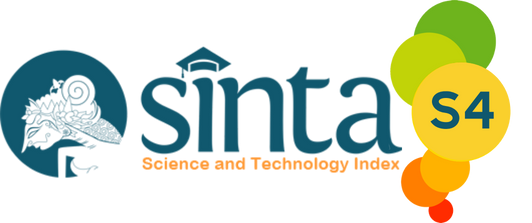Implementasi Lembar Kerja Berbasis Proyek Melalui Pembuatan Permen Jelly Rendah Gula
DOI:
https://doi.org/10.52434/jkpi.v5i2.42609Abstract
This study aims to describe the implementation and feasibility of project-based worksheets through a low-sugar jelly candy making project in the Additive and Addictive Chemistry course. The project-based learning model was employed to foster active student engagement, enhance understanding of food additive concepts, and connect learning to everyday health issues. The study involved 30 sixth-semester students from the Chemistry Education Program and adopted a quantitative descriptive approach. The instruments used included observation sheets, worksheet assessments, posters, and presentations. All instruments were validated by three expert lecturers based on presentation, construct, content, and question aspects, with an average feasibility score of 89%, indicating that the instruments were highly suitable for use. Data analysis was conducted by calculating average scores using a percentage formula, which were then interpreted into specific assessment categories. The result showed average scores of 89 for student activity, 89 for worksheet completion, 97 for poster quality, and 88 for presentations. Each stage of the learning process was implemented systematically and demonstrated active student participation–from problem analysis to product publication. The final product low-sugar jelly candy, exhibited good quality in terms of texture, sugar content, and acceptability. All learning aspects were rated in the “very good” category. These findings suggest that project-based worksheets can serve as an effective learning medium to support student engagement in conceptual understanding, laboratory application, and communicative presentation of scientific results in chemistry learning.
Keywords: Project-Based Learning, Worksheet, Jelly Candy
Downloads
Published
Issue
Section
License

Ciptaan disebarluaskan di bawah Lisensi Creative Commons Atribusi-BerbagiSerupa 4.0 Internasional. Penulis yang menerbitkan dengan jurnal ini setuju dengan ketentuan berikut:
- Penulis mempertahankan hak cipta dan memberikan hak penerbitan pertama kepada jurnal dengan karya yang secara bersamaan dilisensikan di bawah Lisensi Attribution-ShareAlike 4.0 International (CC BY-SA 4.0) yang memungkinkan orang lain untuk membagikan karya tersebut dengan pengakuan kepenulisan karya dan publikasi awal dalam jurnal ini.
- Penulis dapat membuat pengaturan kontrak tambahan yang terpisah untuk distribusi non-eksklusif dari versi jurnal yang diterbitkan dari karya tersebut (misalnya, mengunggahnya ke repositori institusional atau menerbitkannya dalam buku), dengan pengakuan publikasi awal dalam jurnal ini.
- Penulis diizinkan dan didorong untuk memposting karya mereka secara online (misalnya, di repositori institusional atau di situs web mereka) sebelum dan selama proses pengiriman, karena hal ini dapat mengarah pada pertukaran yang produktif, serta sitasi yang lebih awal dan lebih besar dari karya yang diterbitkan (Lihat Efek Akses Terbuka).













